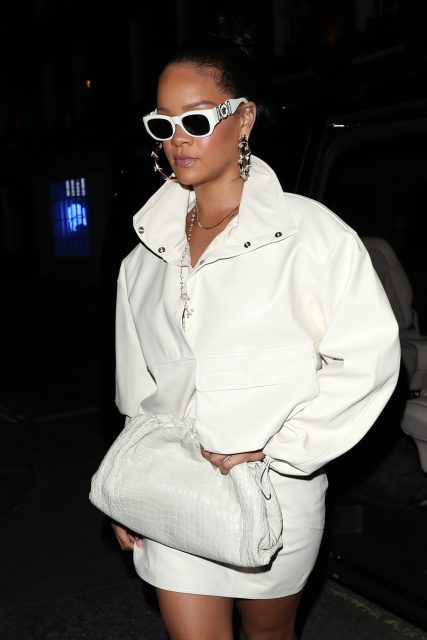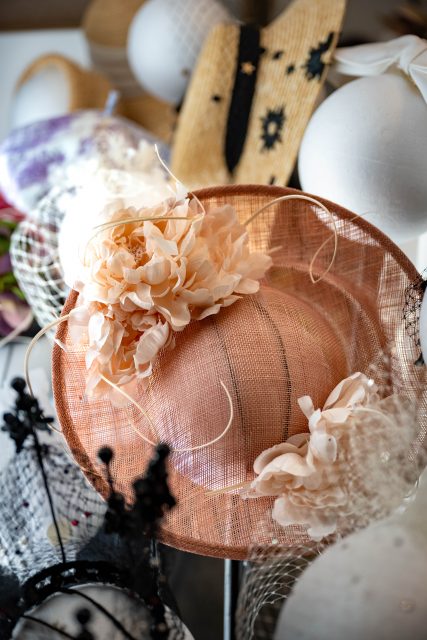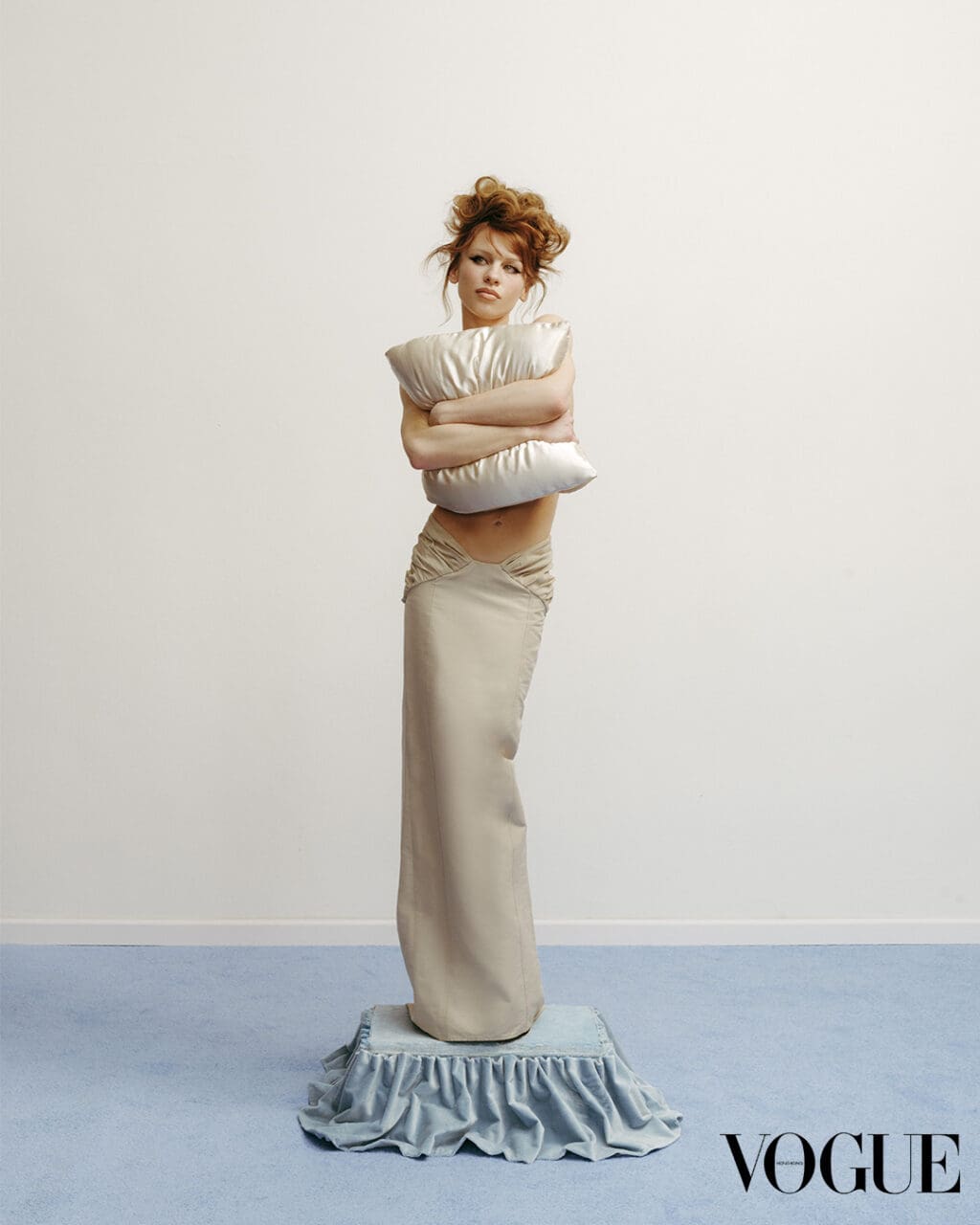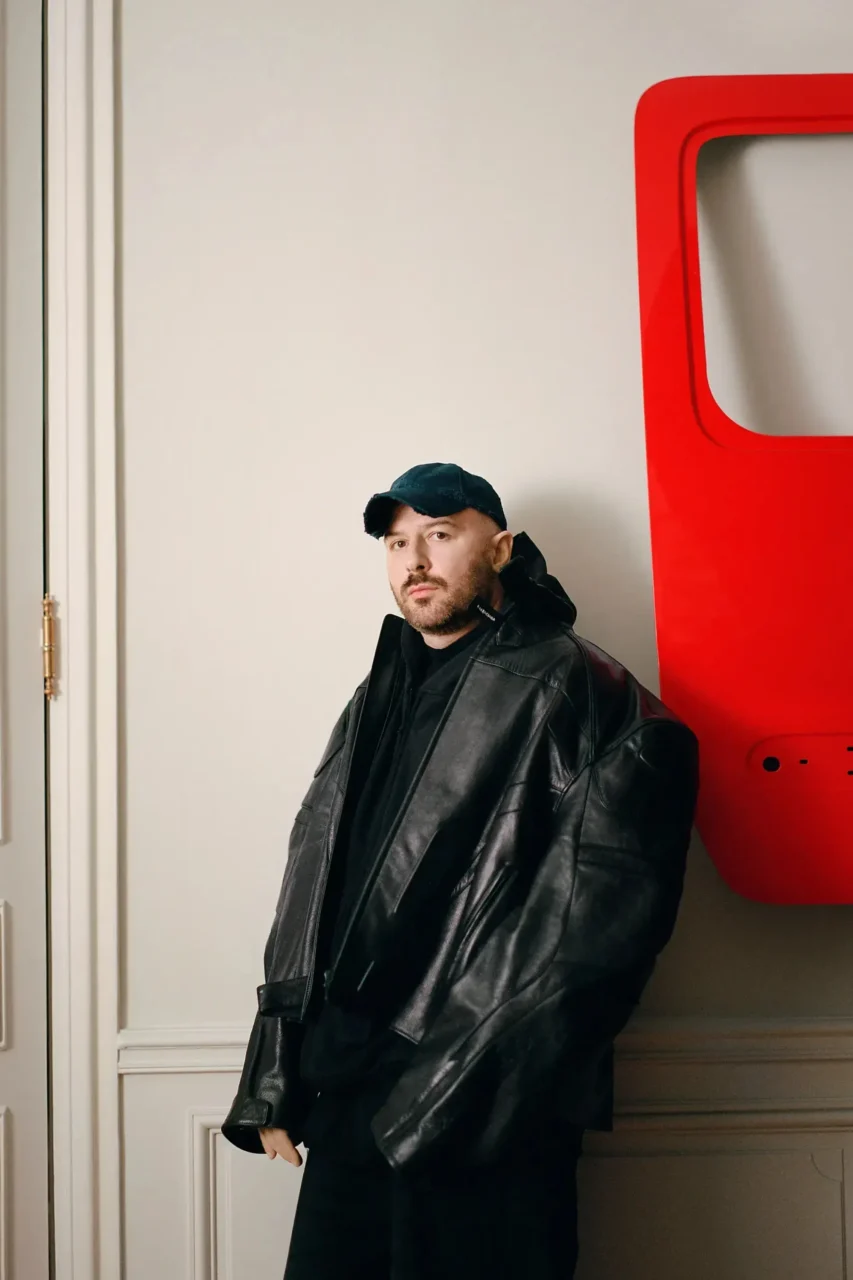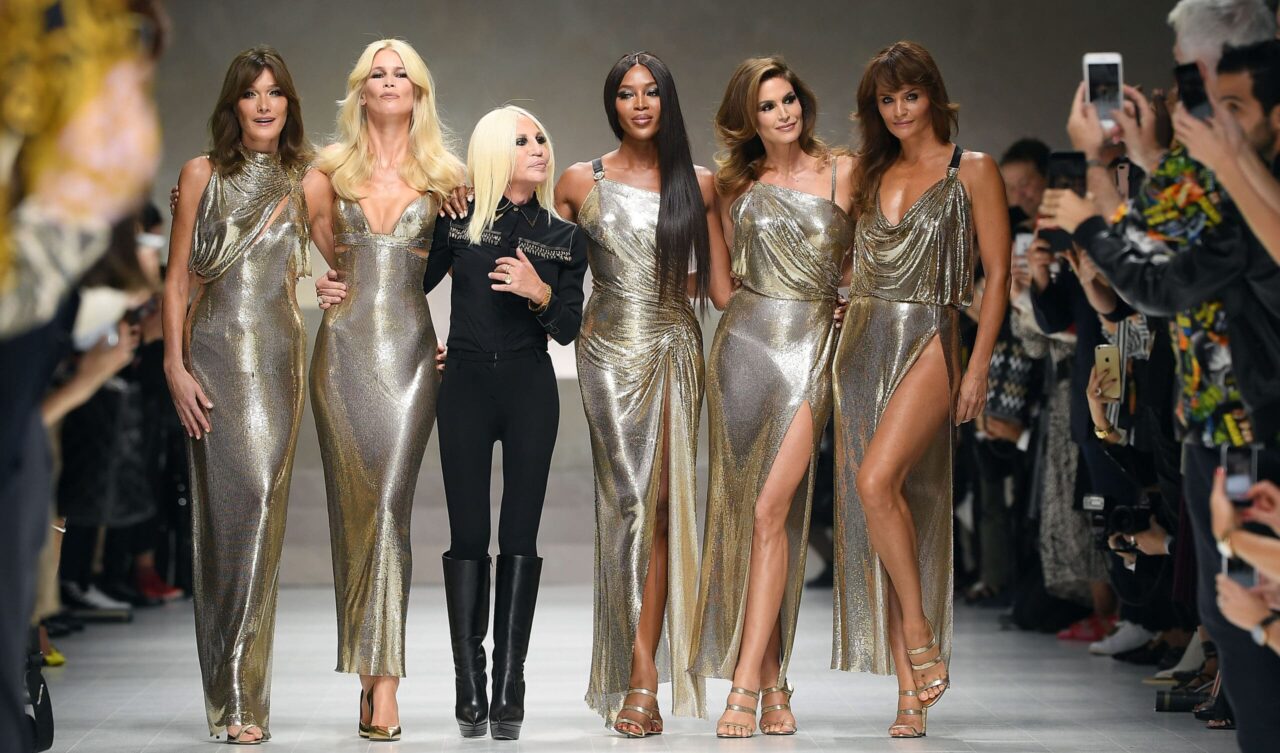Daniel Lee is sitting in a penthouse suite at Claridge’s in an army-green sweater, sporty black trousers and Nikes. It is mid-November and beyond the French doors behind him, a sweeping view of drizzly London is visible; Big Ben stands in the distance. The night before, Lee was at Chiltern Firehouse, reconnecting with local fashion reporters and at least one of his former professors from Central Saint Martins, and his throat is a bit sore. “It was nice to do it in that kind of environment,” he says. “You know, when I’m not exhausted from a collection.”
Lee, who is 36, was named chief creative officer of Burberry in October, just days after Riccardo Tisci’s final show for the British heritage brand. It’s a homecoming for the designer – his creative director position at Bottega Veneta had him living between Milan and London. “I’m really happy because it feels full circle,” Lee says. “I haven’t lived here full-time since my Saint Martins days. I went to New York [for Donna Karan], then Paris [for Céline], and then Milan, going back and forwards between those various places and coming back to London as an escape or for inspiration. It’s nice to be back here and based properly.”
When he’s not working – which, let’s face it, isn’t often these days – Lee spends time with his partner Roberto Bolle, a former principal dancer at American Ballet Theatre. They go to the Royal Opera House to see ballet – Crystal Pite’s “Light of Passage” was “really amazing,” he says – and they seek out music: Kendrick Lamar at The O2 most recently. He’s also in the midst of a house renovation. “It’s a Georgian terrace, very typical London, which I love, because it feels like Charles Dickens,” he says. “It’s nice to have that feeling of being in a space that has history and you’re just a certain part of its history; it’s lived before you and it will live after you.”
Lee’s Burberry debut is scheduled for February 20, giving him just a few months to define his vision for the brand. At Bottega Veneta, he had much more runway – eight months from his appointment to the first show. It was his inaugural creative director role, and at the start he was too shy to take questions backstage, but that didn’t mean Lee lacked a strong point of view. His Pouch and Cassette bags were instant hits, and the surprising appeal of his square-toed woven intrecciato shoes spawned copycats up and down London’s high street. Ditto his sturdy Puddle boots (these could be a good jumping-off point for the more outdoorsy Burberry). Under Lee’s watch, Bottega’s signature bright green became the hottest colour in fashion.
He was rewarded for all this with four statuettes at London’s Fashion Awards in December 2019, a feat matched by no other designer before or after. Early on in the pandemic, Bottega Veneta was flying high enough to step away from the show calendar in favour of more intimate runways far off the fashion week circuit. Then, as quickly as his Bottega Veneta took off – days after a Detroit runway show in October 2021, where Mary J Blige and Lil’ Kim were in the front row – Lee left. The house’s parent company, Kering, said only that it was a “joint decision,” which led to a lot of speculation, both online and within the industry, about why Lee may have gone. When asked about all of this a year later, Lee doesn’t address the matter head-on. Instead, he says, “I think people will see going forward how the team continues to work together. At Burberry, there’s people I’ve worked with at various points in my career.” He doesn’t dwell on regrets, either. “I still feel very honoured that I see the influence of Bottega all around me – you know, when I’m walking down the street.”
Since Lee’s appointment at Burberry, much has been made about his Britishness, especially within Britain. Lee says he understands why. “As a kid growing up, Burberry is a brand that everybody in the country knows. It’s really a symbol of the British.” His own connection to the label is deeper than that of your average Englishman. “I’m from Bradford, Yorkshire, very close to Castleford, where the trench coats are manufactured, and to Keighley, where the gabardine is made,” Lee says. “So it’s very close to my homeland. And some of my mum’s family worked in various factories, that were supplying for Burberry. My mum actually has the trench coat that her aunt had gotten as a retirement gift. It’s kind of sweet.” Lee is the oldest of three siblings, and his brother, a plumber, and sister, a nurse specialising in alcohol dependency, both still live in Yorkshire, not far from his mother and father. “We’ve been researching what is left of the industry in the UK,” the designer says. “Sadly, it wasn’t as well ring-fenced as it was in France or Italy, but there’s still elements here. It’s exciting to think about what possible partners we have, and how we can help save jobs.”
After settling in, Lee’s first order of business has been getting to know the teams. He’s also been making trips – to Florence, where the company has a leather goods and shoes facility; to Castleford for the trenches; and to the archive, which is split between London and Blyth, in the North of England. “I’ve been looking at the beginnings of the three major codes of the house, which are obviously the check, the knight and the gabardine, and trying to understand how we can be inspired to take them forward.”
The brand was founded 166 years ago when a young Thomas Burberry started producing garments to ward off the British weather. He’s credited with inventing gabardine, a tightly woven waterproof wool, circa 1879. Functionality is the concept that Lee has latched onto: “It’s really [about] design with meaning, that’s innovative with a purpose, as opposed to just being innovative for a new silhouette or a new construction or technique. Thomas Burberry’s intention was to make clothes for people that were outside doing things,” he goes on. “It’s more of that mentality that I’m trying to get myself into.”
As the conversation turns to the actual fashion, Lee leans in. “Think about the trench coat – it’s been around for decades. So what is the bag that can stand the test of time like that trench coat? What is the shoe? What is the overcoat that lives legitimately next to the trench and will be around for a very long time? We’re thinking about the feeling of the outdoors,” he says. “It’s not necessarily about an overcoat, but also about warmth, tactility, and cosiness. And about being on the move, and not being weighed down. I’m quite excited about starting with a winter show, because I think it makes a lot of sense for Burberry.”
Lee is something of an outdoorsman himself. During the year between Bottega Veneta and Burberry, he traveled to Botswana and Zimbabwe. “Botswana, especially, was incredible,” he says, “because it’s one of the least inhabited countries on the planet. It grounds you in a way to be around the animals.” He also hiked to Machu Picchu and went to Cuba – twice.
We won’t have to wait until the runway show to get our first clue about the direction Lee’s heading. Last month, he shot his first Burberry campaign with Tyrone Lebon, the London-born photographer with whom he collaborated at Bottega Veneta. It features Burberry classics, seen through Lee’s lens, and is set to launch in early February on all the usual channels. (It’s a more traditional media strategy than the one he implemented at Bottega Veneta, which famously deleted all of its Instagram content, then deactivated its account, in favour of a “digital journal.”)
“I love working with Tyrone and his team because we all contribute, we all have ideas. We have a real relationship that was built up over a long time; we’re honest with each other.” Lee is pumped about the cast too. “It’s really about London and the UK, a mix of people who are the best at what they do. You know: People with real substance.” He prefers not to name names yet, but confirms they come from the culture of dance, football, music, theatre. “Burberry flies the flag for Britishness and for the UK and for culture. So we have to use our platforms because we have a responsibility to communicate those things. I don’t know if this is the right way to say this,” he continues, “but more than surprising people, I really would like them to see the new vision and feel reassured – like, ‘Oh, yeah, this makes sense: This is what Burberry should be.’”
He says he feels aligned with Burberry’s CEO, Jonathan Akeroyd, who joined the brand from Versace in April of this year. “We’re really excited about building out every single area,” Lee says. Demonstrating just how hands-on he is, he says he’s not working with a stylist for the runway show, though he does surround himself with women for their invaluable perspective. “We kind of do it internally as a team. I worked with a stylist for the first few at Bottega and then afterwards, we didn’t. Because it’s so intrinsic to the process.”
The first fashion show Lee saw after graduating from Central Saint Martins was Christopher Bailey’s autumn/winter 2012 outing for Burberry – “the one with the artificial rain,” as he remembers. Before that, his first Burberry piece was a jumper of Bailey’s design. “The knitwear was really great when Christopher was there,” he says. Mutual Yorkshire roots brought Lee and Bailey together when Lee got the Bottega Veneta job, and his predecessor, who headed up the brand from 2001 to 2018, has become something of a mentor. “I think Christopher really fostered this sense of community [at Burberry]; he’s very warm and welcoming. He was in the brand for such a long time.”
Will Lee stay as long? He seems to be approaching it a bit like he has his Georgian terrace. “I don’t try to predict too far into the future,” he says. “But you know, my intention is to write an iconic chapter.”
Editor
Nicole PhelpsCredit
Lead image: Darren Gerrish via Getty Images
